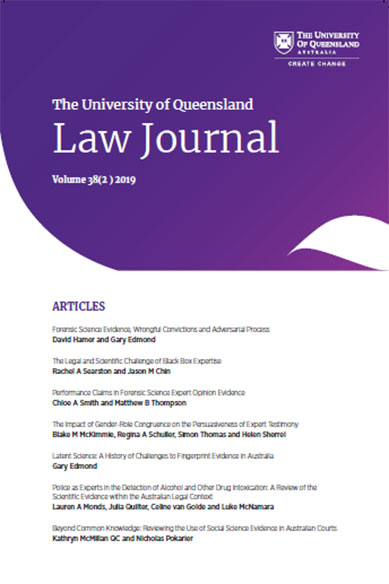Abstract
Through a review of reported challenges this article explains how latent fingerprint evidence was routinely admitted and relied upon as proof of identity in criminal proceedings before its value and limitations were studied or understood. That it was admitted and used in ways that were disengaged from scientific research reveals a great deal about our adversarial system — of pleas, rules of admissibility, trial safeguards, standards of proof, and heavy reliance on the technical competence of lawyers and judges. This article draws on contemporary scientific research to explain how more than a century of routine legal reliance, along with quite a few admissibility challenges, produced few meaningful responses and no apparent endogenous understanding of the limitations of latent fingerprint comparison. Trial personnel and trial safeguards did not lead to the identification, recognition and communication of methodological problems, uncertainties or the frequency of error. Latent fingerprint evidence continues to be presented in ways that are not informed by scientific research, are inconsistent with mainstream scientific advice, exaggerate the value of opinions, and unecessarily threaten both the rectitude and fairness of criminal proceedings.
